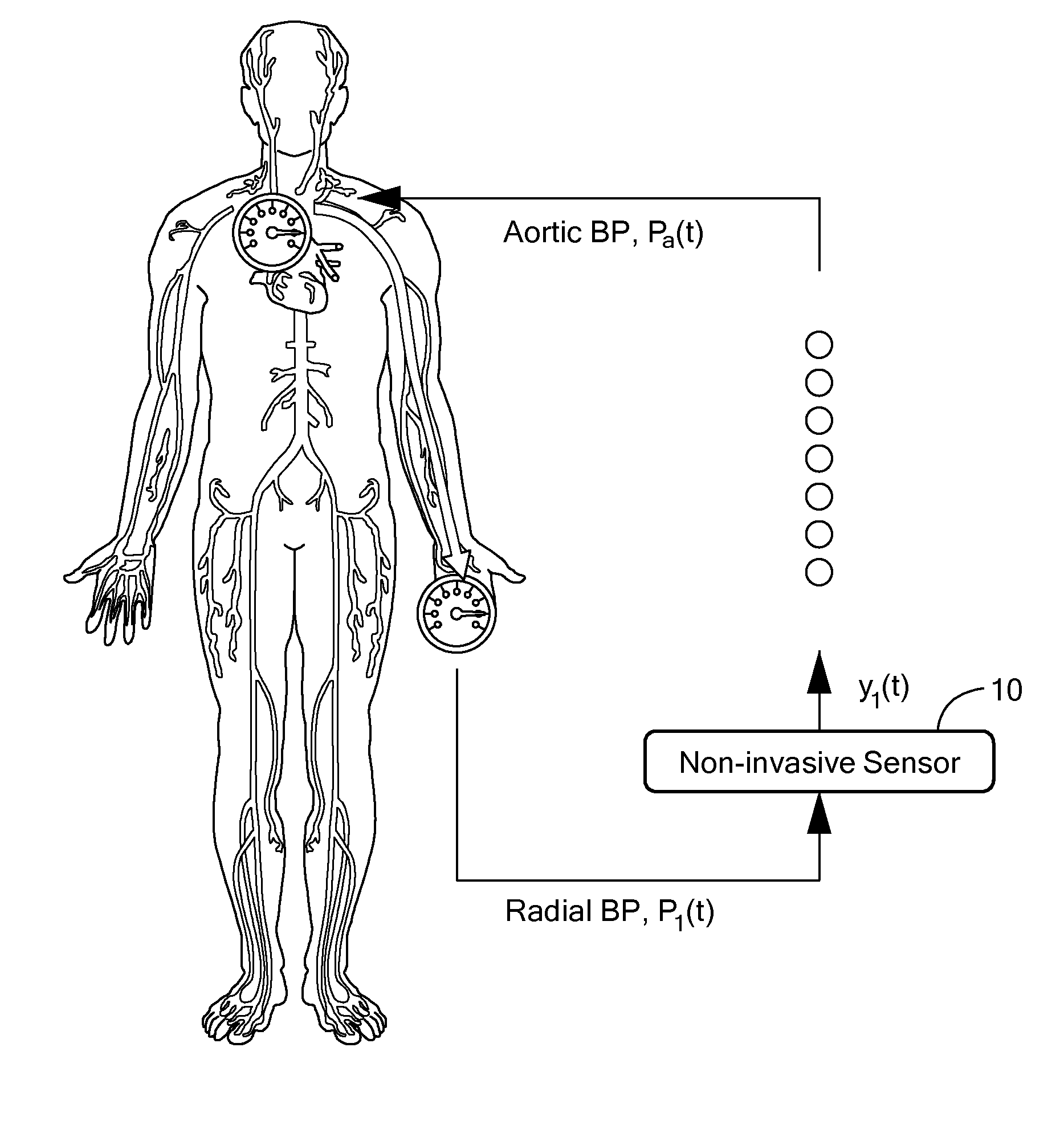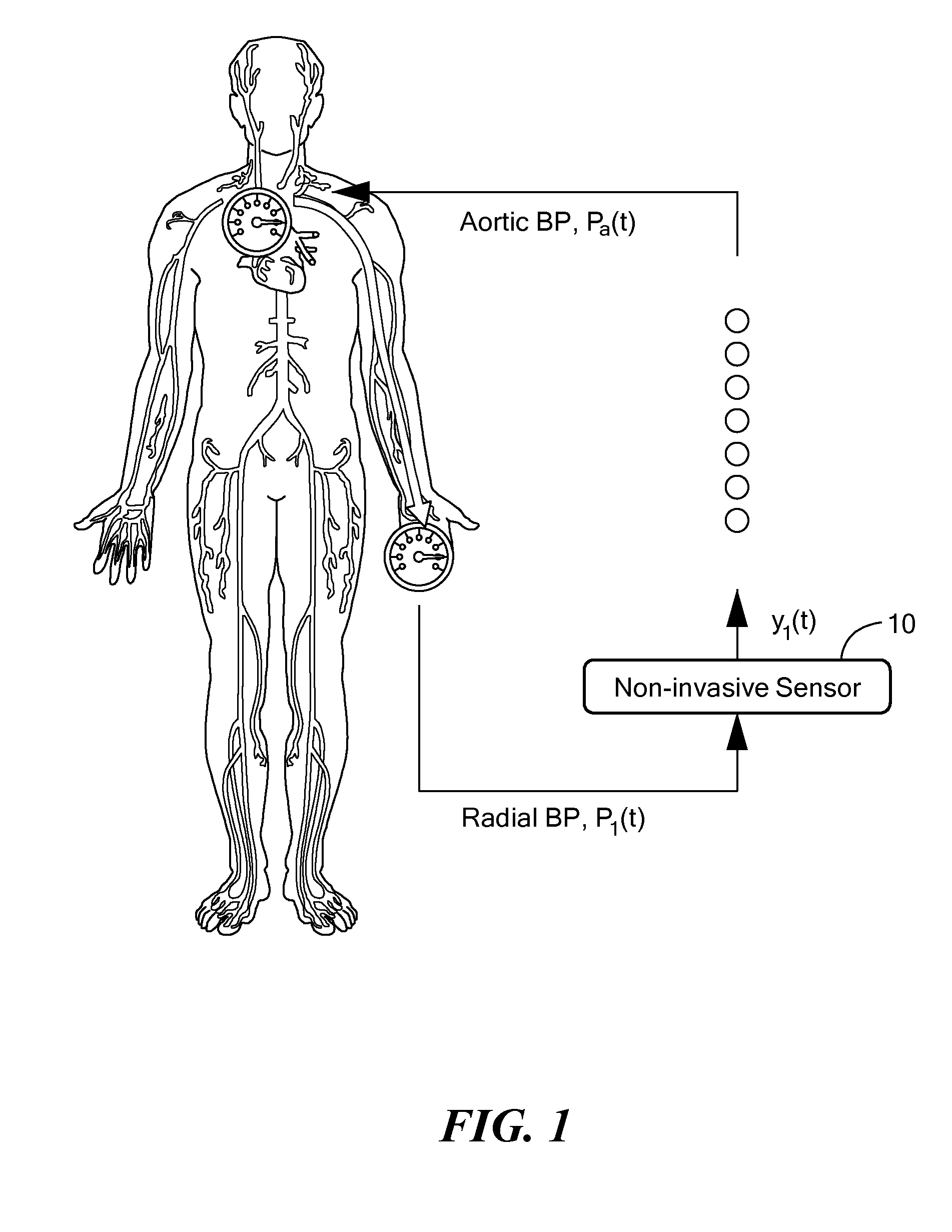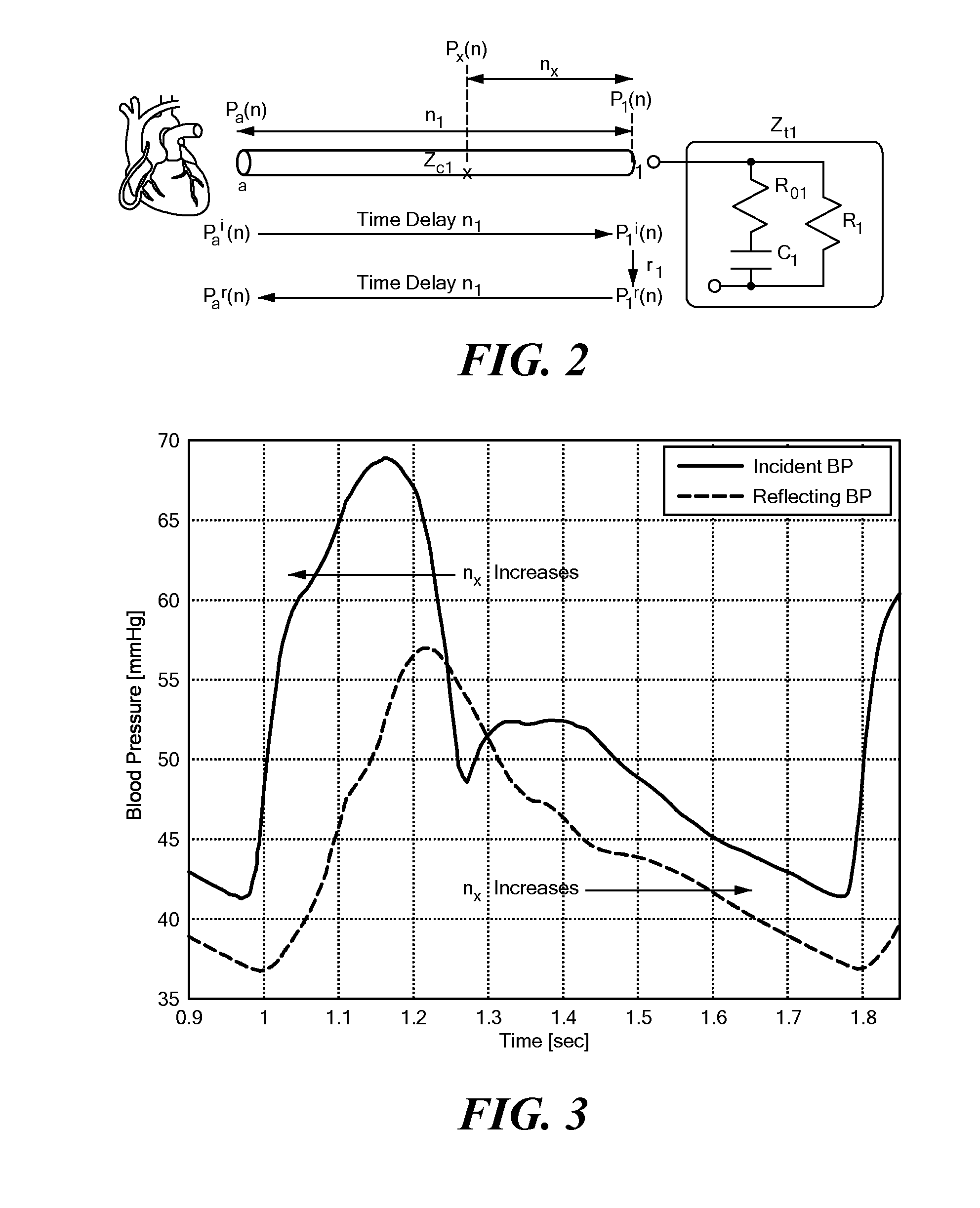Estimating Aortic Blood Pressure from Non-Invasive Extremity Blood Pressure
a technology extremity, applied in the field of estimating aortic blood pressure from non-invasive extremity blood pressure, can solve the problems of not solving problem #2, affecting the accuracy of aortic blood pressure estimation, and requiring invasive procedures such as pulmonary artery or central aortic catheterization,
- Summary
- Abstract
- Description
- Claims
- Application Information
AI Technical Summary
Benefits of technology
Problems solved by technology
Method used
Image
Examples
Embodiment Construction
[0034]In accordance with preferred embodiments of the present invention, a novel method is provided for obtaining an input circulatory waveform, such as an aortic blood pressure (BP) signal, based on a measurement performed with a single non-invasive sensor applied at a point on the periphery of the cardiovascular system of a patient.
[0035]Instead of directly measuring pulse delay time, a spectrum of different, possible delays are analyzed. Then, an evaluation algorithm is used to judge which of these possible delays is most physiologically valid. The method also estimates all other parameters of the aortic-peripheral blood pressure relationship. As a result, the current invention is distinct from, and provides advantages relative to, all of the prior art methods, particularly in that it is capable of deriving subject-specific aortic-peripheral blood pressure relationship based only on a non-invasive, peripheral blood pressure measurement; this method eliminates the need to 1) use p...
PUM
 Login to View More
Login to View More Abstract
Description
Claims
Application Information
 Login to View More
Login to View More - R&D
- Intellectual Property
- Life Sciences
- Materials
- Tech Scout
- Unparalleled Data Quality
- Higher Quality Content
- 60% Fewer Hallucinations
Browse by: Latest US Patents, China's latest patents, Technical Efficacy Thesaurus, Application Domain, Technology Topic, Popular Technical Reports.
© 2025 PatSnap. All rights reserved.Legal|Privacy policy|Modern Slavery Act Transparency Statement|Sitemap|About US| Contact US: help@patsnap.com



